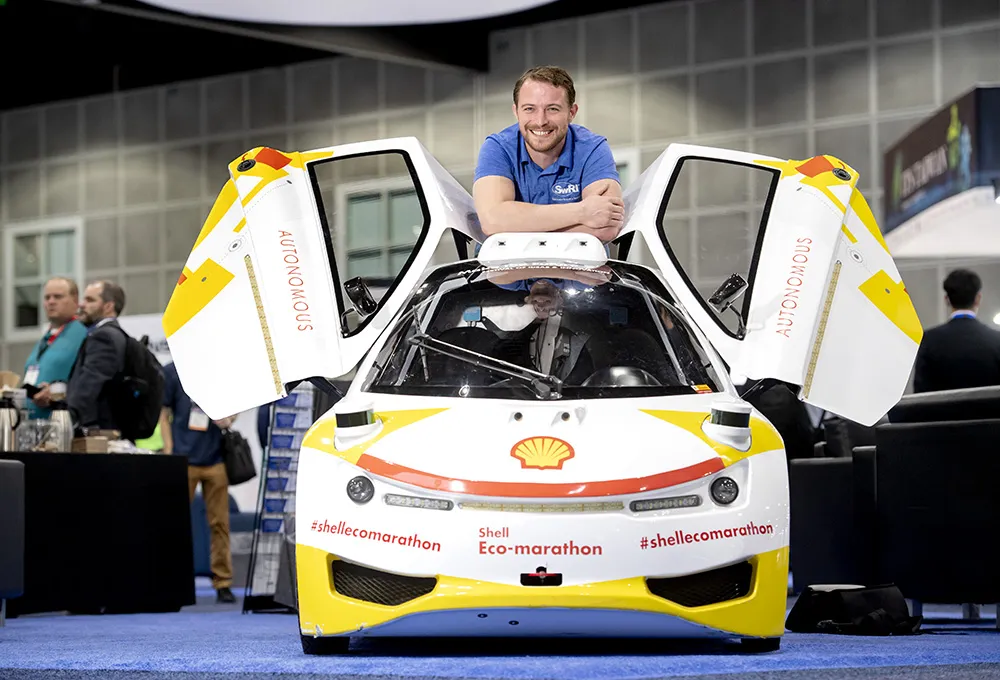The first full vehicle prototype of the Taxi of Tomorrow, the 2014 Nissan NV200, is being featured at the 2012 New York International Auto Show which is open to the public from 6-16 April. After a rigorous, two-year competitive bid selection process, the New York City Taxi and Limousine Commission (TLC) selected the Nissan NV200 Taxi in May 2011 as the exclusive taxi of New York City, beginning in late 2013. The Cooper-Hewitt National Design Museum, the Design Trust for Public Space and Smart Design also ha
April 4, 2012
Read time: 2 mins

The first full vehicle prototype of the Taxi of Tomorrow, the 2014 838 Nissan NV200, is being featured at the 2012 New York International Auto Show which is open to the public from 6-16 April.
After a rigorous, two-year competitive bid selection process, the New York City Taxi and Limousine Commission (TLC) selected the Nissan NV200 Taxi in May 2011 as the exclusive taxi of New York City, beginning in late 2013. The4765 Cooper-Hewitt National Design Museum, the Design Trust for Public Space and Smart Design also have engaged with Nissan and the TLC in the vehicle's design.
Designed from the inside out, using input from New York taxi drivers, medallion holders, fleets and passengers, standard interior features and passenger amenities include ample room for four passengers and their luggage, offering substantial improvements over current taxi models; sliding doors with entry step and grab handles, providing easy entry and exit; transparent roof panel, presenting unique views of the city; opening side windows; independently controlled rear air conditioning; active carbon lined headliner to help neutralise interior odours; overhead reading lights for passengers and floor lighting to help locate belongings; a mobile charging station for passengers, including a 12-volt electrical outlet and two USB ports; breathable, antimicrobial, environment-friendly, durable and easy-to-clean seat fabric, simulating the look and feel of leather; and flat "no hump" passenger floor area for more comfortable ride
The engine of the new vehicle is a proven 2.0L 4-cylinder powertrain, engineered to enhance the emission performance and fuel efficiency of the taxi fleet. However, as part of the Taxi of Tomorrow programme, Nissan is also working with the New York city and taxi owners on a pilot project to study the use of zero-emission, electric vehicles as taxis. The company will provide six 100-per cent electric Nissan LEAFs and three Level 2 charging stations at no charge to taxi owners and New York City to test the electrification of the taxi fleet.
After a rigorous, two-year competitive bid selection process, the New York City Taxi and Limousine Commission (TLC) selected the Nissan NV200 Taxi in May 2011 as the exclusive taxi of New York City, beginning in late 2013. The
Designed from the inside out, using input from New York taxi drivers, medallion holders, fleets and passengers, standard interior features and passenger amenities include ample room for four passengers and their luggage, offering substantial improvements over current taxi models; sliding doors with entry step and grab handles, providing easy entry and exit; transparent roof panel, presenting unique views of the city; opening side windows; independently controlled rear air conditioning; active carbon lined headliner to help neutralise interior odours; overhead reading lights for passengers and floor lighting to help locate belongings; a mobile charging station for passengers, including a 12-volt electrical outlet and two USB ports; breathable, antimicrobial, environment-friendly, durable and easy-to-clean seat fabric, simulating the look and feel of leather; and flat "no hump" passenger floor area for more comfortable ride
The engine of the new vehicle is a proven 2.0L 4-cylinder powertrain, engineered to enhance the emission performance and fuel efficiency of the taxi fleet. However, as part of the Taxi of Tomorrow programme, Nissan is also working with the New York city and taxi owners on a pilot project to study the use of zero-emission, electric vehicles as taxis. The company will provide six 100-per cent electric Nissan LEAFs and three Level 2 charging stations at no charge to taxi owners and New York City to test the electrification of the taxi fleet.








